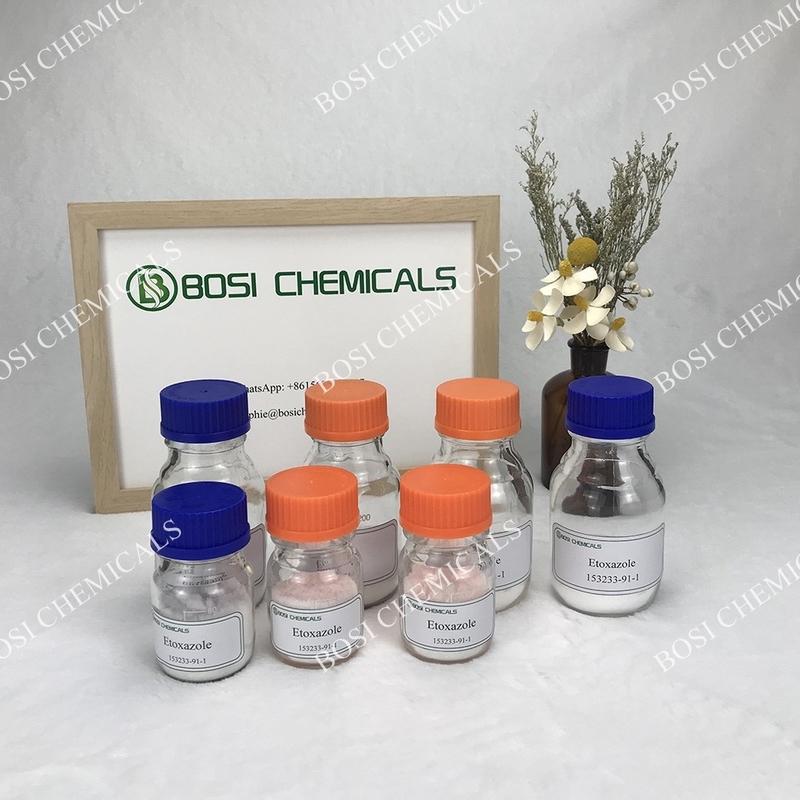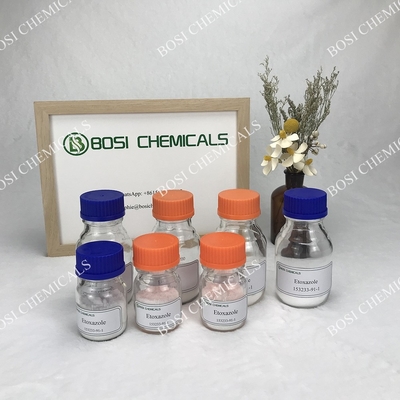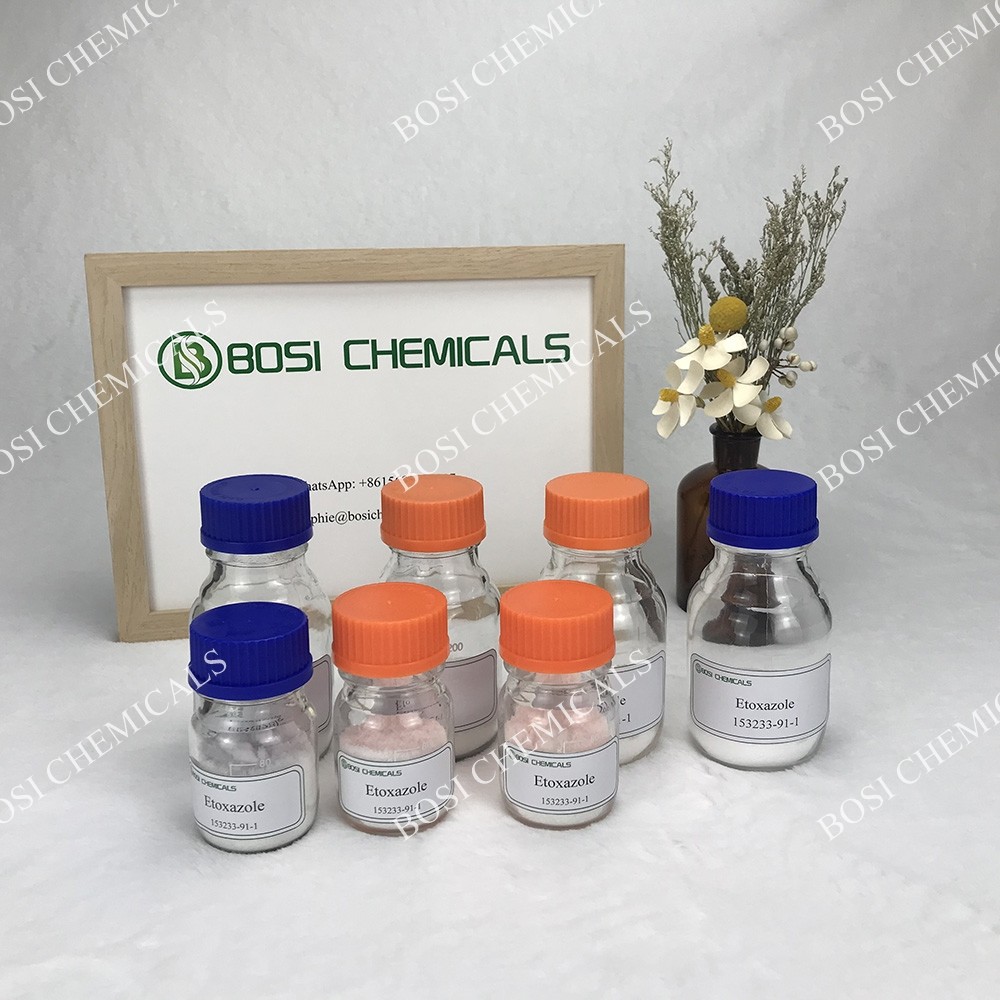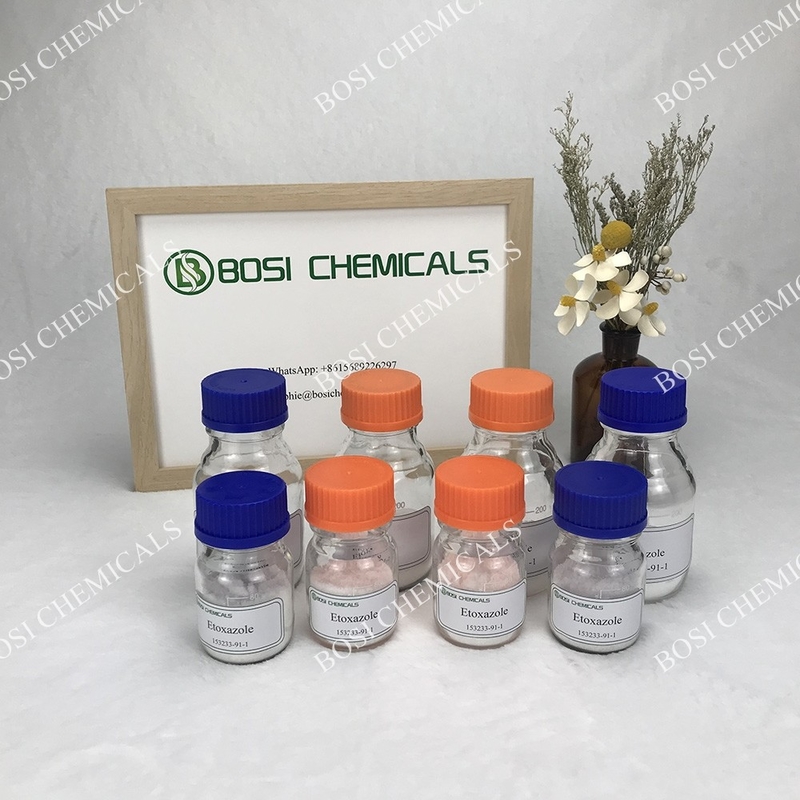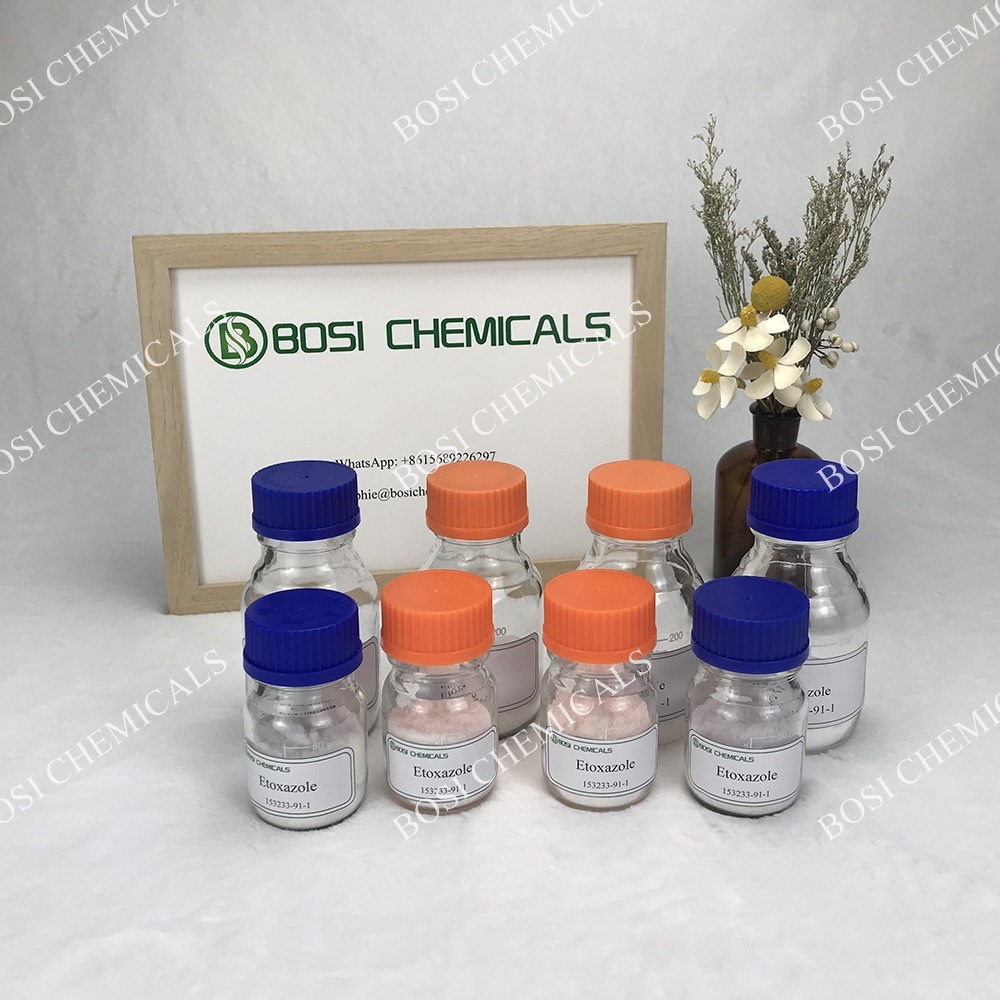Etoxazole Fine Chemical Intermediates With CAS No. 153233-91-1
Etoxazole belongs to the class of diphenyloxazoline derivatives. The appearance of pure etoxazole is white crystal powder, melting point: 101.5~102.5℃; decomposition temperature 293℃; vapor pressure (25℃): 7.0×10-6Pa; n-octanol/water KowLogP=5.59 (25℃); solubility (g/L, 20°C): 7.04×10-5 in water, 104.0 in methanol, 251.7 in xylene. The mass fraction of etoxazole original drug is ≥93%, and the appearance is white lump powder; the appearance of etoxazole 110 g/L suspension agent is white opaque liquid; pH6~8; suspension rate≥70%; wet sieve test (%, 40μm sieve): 0.08~0.13; stable under alkaline conditions; stable in cold and hot storage and 2-year storage at room temperature.

| ITEM |
CONTENT |
| Alias |
2-(2,6-Difluorophenyl)-4-[2-ethoxy-4-(2-methyl-2-propanyl)phenyl]-4,5-dihydro-1,3-oxazole |
| MF |
C21H23F2NO2 |
| Purity |
98% |
| CAS No. |
153233-91-1 |
| EINECS No. |
201-167-4 |
| Appearance |
colorless crystalline powder with a musty odor |
| Melting Point |
101-102° |
| Type |
chemical intermediates |
| MW |
359.41 |
| Boiling Point |
449.1±45.0 °C(Predicted) |
| Storage |
Sealed in dry,2-8°C |
| Solubility |
Chloroform (Slightly), Methanol (Slightly) |
| Flash Ponit |
457℃ |
| Product Format |
Neat |
| Acidity factor (pKa) |
2.04±0.70(Predicted) |

Features:
1. Inhibits the embryo formation of mite eggs and the molting process from larvae to adult mites. It is effective for eggs and larvae, but not for adult mites, but has a good sterile effect on female adult mites. Therefore, the best control time is the early stage of the damage of mites. It has strong rain resistance and lasts for up to 50 days. Ethoxazole is mainly used to control a variety of spider mites. It is a contact type acaricide, its mechanism of action is to inhibit the normal molting process of mites and has ovicidal activity, so it can effectively control the entire juvenile stage of mites (eggs, larvae and nymphs), and it also has sterility on female adult mites. effect. The indoor activity test (Tetranychus urticae) showed good ovicidal activity; the field efficacy test showed that etoxazole 110 g/L suspending agent had a good control effect on the control of citrus red spider. Dosage: The effective concentration of Chemicalbook is 14.7~22mg/kg (equivalent to 5263~6250 times dilution of 110g/L suspending agent); the control period is when larvae and nymphs are in their prime; the use method is stem and leaf spray. The maximum number of applications per season was 2 times, and the safety interval was 21 days. The drug has a long duration of effect, up to 30-40 days; under the recommended dose, it is safe for citrus, and no phytotoxicity has occurred. It has little harmful effect on natural enemies such as predatory mites, and has no knockdown effect on ladybugs and flower bugs.
2. Toxicity determination: toxicity level: according to authoritative literature inquiry, the acute oral LD50 (male/female) of the original etoxazole in rats is >5000mgkg, the acute percutaneous LD50 (male and female) in rats is >2000mgkg, acute inhalation toxicity in rats LCso (male/female)>1090mg/m According to the classification standard of pesticide toxicity, etoxazole original drug belongs to low toxicity pesticide environmental toxicity: bird oral → low toxicity; fish → poisoning; Daphnia → high toxicity; algae → low Poison; bee oral → low toxicity: bee contact → low toxicity: earthworms → low toxicity.
3. Advantages and highlights: low toxicity, high efficiency, and environment-friendly selective acaricides, especially for mites eggs and young mites.
4. Control objects: It mainly controls red spider mites in apples and citrus. It also has excellent control effect on mites such as spider mites, Eotetranychus mites, Panclaw mites, two-spotted spider mites, and cinnabar spider mites in cotton, flowers, vegetables and other crops.

 Your message must be between 20-3,000 characters!
Your message must be between 20-3,000 characters! Please check your E-mail!
Please check your E-mail!  Your message must be between 20-3,000 characters!
Your message must be between 20-3,000 characters! Please check your E-mail!
Please check your E-mail! 

